Wallace Centenary Issue | Volume 7 | Number 3 | 2015
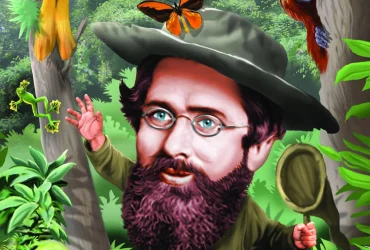 v7i3.186
v7i3.186ISSN: 1800-427X (print)
eISSN: 1800-427X (online)
Alfred Russel Wallace Centenary Issue
DOI:10.47605/tapro.v7i3.186
Proceedings of the Second International Conference on Alfred Russel Wallace and the Wallacea
Organised by the Indonesian Academy of Sciences
Wakatobi - Indonesia (10–13 November 2013)
J. Supriatna, A.A.T. Amarasinghe, and C. Margules (Editors)
Published date: 30 July 2015
Pp. 143–150, Pls. 5–7.
ISOLATION OF MARINE BACTERIA IN AMBON BAY WITH POTENTIAL BIOTECHNOLOGICAL FEATURES
Yosmina Tapilatu*
*Corresponding author. E-mail: yosmina.tapilatu@lipi.go.id
Abstract
Ambon Bay is situated in the Wallacea biogeographical area. Despite various studies on marine natural resources reported from this bay, limited information is available on marine bacteria that produce compounds with potential biotechnological applications. We report here preliminary results of our attempt to isolate bacteria of this group from Ambon Bay. Nine different isolates were obtained, but only eight indicated potential as producers of compounds with biotechnological potential. Two isolates indicated agarolytic bacteria characteristics, whereas one showed the properties of exopolysaccharide (EPS) producing bacteria. Three isolates produced various pigments. Two were identified tentatively as members of actinomycetes, a group known as a prolific producer of antimicrobial compounds. Preliminary identification of the cell morphologies of each isolate revealed the dominance of cocci-shaped bacteria. Most of them showed optimal growth in 1 to 7 days when incubated at 30°C. These results indicate that Ambon Bay waters and the surrounding area could harbour marine bacteria with potential features for biotechnological applications.
Key words : eastern Indonesia, marine bacteria, secondary metabolites, Wallacea marine area
eISSN: 1800-427X (online)
Alfred Russel Wallace Centenary Issue
DOI:10.47605/tapro.v7i3.186
Proceedings of the Second International Conference on Alfred Russel Wallace and the Wallacea
Organised by the Indonesian Academy of Sciences
Wakatobi - Indonesia (10–13 November 2013)
J. Supriatna, A.A.T. Amarasinghe, and C. Margules (Editors)
Published date: 30 July 2015
Pp. 143–150, Pls. 5–7.
ISOLATION OF MARINE BACTERIA IN AMBON BAY WITH POTENTIAL BIOTECHNOLOGICAL FEATURES
Yosmina Tapilatu*
*Corresponding author. E-mail: yosmina.tapilatu@lipi.go.id
Abstract
Ambon Bay is situated in the Wallacea biogeographical area. Despite various studies on marine natural resources reported from this bay, limited information is available on marine bacteria that produce compounds with potential biotechnological applications. We report here preliminary results of our attempt to isolate bacteria of this group from Ambon Bay. Nine different isolates were obtained, but only eight indicated potential as producers of compounds with biotechnological potential. Two isolates indicated agarolytic bacteria characteristics, whereas one showed the properties of exopolysaccharide (EPS) producing bacteria. Three isolates produced various pigments. Two were identified tentatively as members of actinomycetes, a group known as a prolific producer of antimicrobial compounds. Preliminary identification of the cell morphologies of each isolate revealed the dominance of cocci-shaped bacteria. Most of them showed optimal growth in 1 to 7 days when incubated at 30°C. These results indicate that Ambon Bay waters and the surrounding area could harbour marine bacteria with potential features for biotechnological applications.
Key words : eastern Indonesia, marine bacteria, secondary metabolites, Wallacea marine area
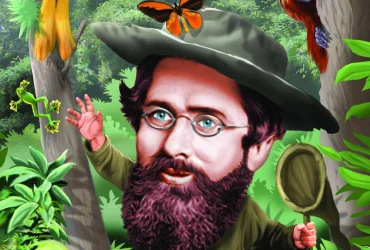 v7i3.185
v7i3.185ISSN: 1800-427X (print)
eISSN: 1800-427X (online)
Alfred Russel Wallace Centenary Issue
DOI:10.47605/tapro.v7i3.185
Proceedings of the Second International Conference on Alfred Russel Wallace and the Wallacea
Organised by the Indonesian Academy of Sciences
Wakatobi - Indonesia (10–13 November 2013)
J. Supriatna, A.A.T. Amarasinghe, and C. Margules (Editors)
Published date: 30 July 2015
Pp. 131–142, Pls. 1–4.
MINING MICROBIAL SYMBIONTS FOR SPONGE-DERIVED NATURAL PRODUCTS: IMPLICATIONS FOR THE WALLACEA
Christine M. Theodore & Phillip Crews*
*Corresponding author. E-mail: pcrews@ucsc.edu
Abstract
The Indonesian Coral Triangle is a biodiversity hotspot bisected by the Wallace line. It is becoming clear that ecological and anthropogenic factors are impacting the region. Our research is focused on the biosynthetic products of sponges. These natural products, which are beneficial to human health, will be lost if biodiversity were to decrease. For decades, chemists have looked to marine sponges as a source of novel pharmaceuticals. Over time, there has been growing suspicion these metabolites may actually be produced by microbial symbionts. Herein, we discuss a brief history of sponge natural products chemistry. Sponge associated microorganisms and their likely role in the production of clinically relevant compounds are explored through three case studies. The potential intellectual and pharmaceutical impact locked within the sponges of the Indonesian Coral Triangle is immense. We conclude that conservation, protection and management of this resource are vital from an ecological and human health perspective.
Key words : Bacteria, bengamide, fijianolide, Indonesian Coral Triangle, psymberin, symbiosis
eISSN: 1800-427X (online)
Alfred Russel Wallace Centenary Issue
DOI:10.47605/tapro.v7i3.185
Proceedings of the Second International Conference on Alfred Russel Wallace and the Wallacea
Organised by the Indonesian Academy of Sciences
Wakatobi - Indonesia (10–13 November 2013)
J. Supriatna, A.A.T. Amarasinghe, and C. Margules (Editors)
Published date: 30 July 2015
Pp. 131–142, Pls. 1–4.
MINING MICROBIAL SYMBIONTS FOR SPONGE-DERIVED NATURAL PRODUCTS: IMPLICATIONS FOR THE WALLACEA
Christine M. Theodore & Phillip Crews*
*Corresponding author. E-mail: pcrews@ucsc.edu
Abstract
The Indonesian Coral Triangle is a biodiversity hotspot bisected by the Wallace line. It is becoming clear that ecological and anthropogenic factors are impacting the region. Our research is focused on the biosynthetic products of sponges. These natural products, which are beneficial to human health, will be lost if biodiversity were to decrease. For decades, chemists have looked to marine sponges as a source of novel pharmaceuticals. Over time, there has been growing suspicion these metabolites may actually be produced by microbial symbionts. Herein, we discuss a brief history of sponge natural products chemistry. Sponge associated microorganisms and their likely role in the production of clinically relevant compounds are explored through three case studies. The potential intellectual and pharmaceutical impact locked within the sponges of the Indonesian Coral Triangle is immense. We conclude that conservation, protection and management of this resource are vital from an ecological and human health perspective.
Key words : Bacteria, bengamide, fijianolide, Indonesian Coral Triangle, psymberin, symbiosis
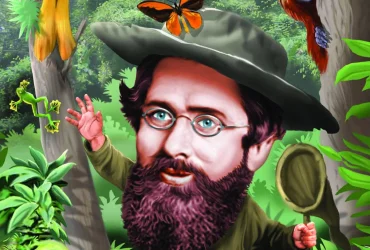 v7i3.184
v7i3.184ISSN: 1800-427X (print)
eISSN: 1800-427X (online)
Alfred Russel Wallace Centenary Issue
DOI:10.47605/tapro.v7i3.184
Proceedings of the Second International Conference on Alfred Russel Wallace and the Wallacea
Organised by the Indonesian Academy of Sciences
Wakatobi - Indonesia (10–13 November 2013)
J. Supriatna, A.A.T. Amarasinghe, and C. Margules (Editors)
Published date: 30 July 2015
Pp. 126–130.
HOW TO PHOTOGRAPH A MOLUCCAN WOODCOCK: EXPERIENCES OF A MODERN FIELD BIOLOGIST IN WALLACEA
John C. Mittermeier*
*Corresponding author. E-mail: john.mittermeier@gmail.com
Abstract
One hundred and fifty years after Alfred Russel Wallace visited the Malay Archipelago much still remains to be discovered about the fascinating species that inhabit the islands now known as Wallacea. While modern fieldwork brings opportunities, and a few difficulties, that Wallace himself would not have imagined, many of the challenges facing field biologists in the twenty-first century are the same as those experienced by Wallace himself. Here I describe the struggles and excitement of Wallacean fieldwork through our efforts to obtain the first photographs of an endangered bird species, the Moluccan Woodcock Scolopax rochussenii, on Obi Island in the Northern Moluccas.
Key words : endangered, field biologists, fieldwork, Northern Moluccas, Obi Island
eISSN: 1800-427X (online)
Alfred Russel Wallace Centenary Issue
DOI:10.47605/tapro.v7i3.184
Proceedings of the Second International Conference on Alfred Russel Wallace and the Wallacea
Organised by the Indonesian Academy of Sciences
Wakatobi - Indonesia (10–13 November 2013)
J. Supriatna, A.A.T. Amarasinghe, and C. Margules (Editors)
Published date: 30 July 2015
Pp. 126–130.
HOW TO PHOTOGRAPH A MOLUCCAN WOODCOCK: EXPERIENCES OF A MODERN FIELD BIOLOGIST IN WALLACEA
John C. Mittermeier*
*Corresponding author. E-mail: john.mittermeier@gmail.com
Abstract
One hundred and fifty years after Alfred Russel Wallace visited the Malay Archipelago much still remains to be discovered about the fascinating species that inhabit the islands now known as Wallacea. While modern fieldwork brings opportunities, and a few difficulties, that Wallace himself would not have imagined, many of the challenges facing field biologists in the twenty-first century are the same as those experienced by Wallace himself. Here I describe the struggles and excitement of Wallacean fieldwork through our efforts to obtain the first photographs of an endangered bird species, the Moluccan Woodcock Scolopax rochussenii, on Obi Island in the Northern Moluccas.
Key words : endangered, field biologists, fieldwork, Northern Moluccas, Obi Island
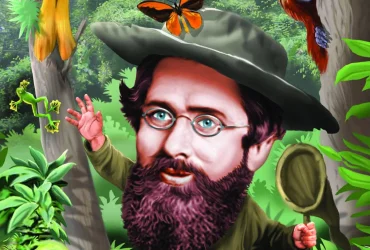 v7i3.183
v7i3.183ISSN: 1800-427X (print)
eISSN: 1800-427X (online)
Alfred Russel Wallace Centenary Issue
DOI:10.47605/tapro.v7i3.183
Proceedings of the Second International Conference on Alfred Russel Wallace and the Wallacea
Organised by the Indonesian Academy of Sciences
Wakatobi - Indonesia (10–13 November 2013)
J. Supriatna, A.A.T. Amarasinghe, and C. Margules (Editors)
Published date: 30 July 2015
Pp. 120–125.
ALFRED RUSSEL WALLACE AND NATURAL SELECTION: THE REAL STORY
George W. Beccaloni*
*Corresponding author. E-mail: g.beccaloni@nhm.ac.uk
Abstract
Alfred Russel Wallace (1823–1913) was a largely self-educated British naturalist, who co-published the theory of evolution by natural selection with Charles Darwin in 1858, fifteen months before Darwin’s book Origin of species was released. Some have suggested that Wallace’s independent discovery of natural selection in Indonesia in February of that year was merely fortuitous, but in fact it was the culmination of a concerted 10 year personal quest to understand how evolutionary change takes place. Although Wallace was showered with prestigious honours and awards for his great discovery, and in spite of the fact that he became one of the most famous people in the world towards the end of his life, his intellectual legacy was rapidly overshadowed by Charles Darwin’s after his death.
Key words : Charles Lyell, Joseph Hooker, Linnean Society, Malay Archipelago
eISSN: 1800-427X (online)
Alfred Russel Wallace Centenary Issue
DOI:10.47605/tapro.v7i3.183
Proceedings of the Second International Conference on Alfred Russel Wallace and the Wallacea
Organised by the Indonesian Academy of Sciences
Wakatobi - Indonesia (10–13 November 2013)
J. Supriatna, A.A.T. Amarasinghe, and C. Margules (Editors)
Published date: 30 July 2015
Pp. 120–125.
ALFRED RUSSEL WALLACE AND NATURAL SELECTION: THE REAL STORY
George W. Beccaloni*
*Corresponding author. E-mail: g.beccaloni@nhm.ac.uk
Abstract
Alfred Russel Wallace (1823–1913) was a largely self-educated British naturalist, who co-published the theory of evolution by natural selection with Charles Darwin in 1858, fifteen months before Darwin’s book Origin of species was released. Some have suggested that Wallace’s independent discovery of natural selection in Indonesia in February of that year was merely fortuitous, but in fact it was the culmination of a concerted 10 year personal quest to understand how evolutionary change takes place. Although Wallace was showered with prestigious honours and awards for his great discovery, and in spite of the fact that he became one of the most famous people in the world towards the end of his life, his intellectual legacy was rapidly overshadowed by Charles Darwin’s after his death.
Key words : Charles Lyell, Joseph Hooker, Linnean Society, Malay Archipelago
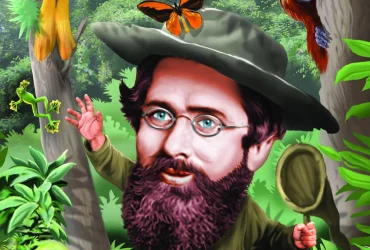 v7i3.182
v7i3.182ISSN: 1800-427X (print)
eISSN: 1800-427X (online)
Alfred Russel Wallace Centenary Issue
DOI:10.47605/tapro.v7i3.182
Proceedings of the Second International Conference on Alfred Russel Wallace and the Wallacea
Organised by the Indonesian Academy of Sciences
Wakatobi - Indonesia (10–13 November 2013)
J. Supriatna, A.A.T. Amarasinghe, and C. Margules (Editors)
Published date: 30 July 2015
Pp. I–IX.
THE TERNATE OF ALFRED RUSSEL WALLACE
Sangkot Marzuki* & Syamsir Andili
*Corresponding author. E-mail: sangkot.marzuki@gmail.com
Abstract
The island-city of Ternate, the original spice island of the Moluccas archipelago in today’s Indonesia, has a special place in the life story of Alfred Russel Wallace. It was from here he sent out his two legendary scientific publications that established him as co-founder of the theory of evolution with Charles Darwin, and as father of biogeography. What was Ternate like in the second half of the 19th century? Where did Wallace reside during his time there? And what did his house look like? This report documents the results of our enquiry into these questions and proposes that his house be reconstructed and used as a local Alfred Russel Wallace and the Wallacea museum.
Key words : Science history, Indonesian archipelago, evolution, Wallace Line, Wallacea
eISSN: 1800-427X (online)
Alfred Russel Wallace Centenary Issue
DOI:10.47605/tapro.v7i3.182
Proceedings of the Second International Conference on Alfred Russel Wallace and the Wallacea
Organised by the Indonesian Academy of Sciences
Wakatobi - Indonesia (10–13 November 2013)
J. Supriatna, A.A.T. Amarasinghe, and C. Margules (Editors)
Published date: 30 July 2015
Pp. I–IX.
THE TERNATE OF ALFRED RUSSEL WALLACE
Sangkot Marzuki* & Syamsir Andili
*Corresponding author. E-mail: sangkot.marzuki@gmail.com
Abstract
The island-city of Ternate, the original spice island of the Moluccas archipelago in today’s Indonesia, has a special place in the life story of Alfred Russel Wallace. It was from here he sent out his two legendary scientific publications that established him as co-founder of the theory of evolution with Charles Darwin, and as father of biogeography. What was Ternate like in the second half of the 19th century? Where did Wallace reside during his time there? And what did his house look like? This report documents the results of our enquiry into these questions and proposes that his house be reconstructed and used as a local Alfred Russel Wallace and the Wallacea museum.
Key words : Science history, Indonesian archipelago, evolution, Wallace Line, Wallacea
Hubungi Kami
The ultimate aim of the journal is to provide an effective medium for communication of the latest and best scientific information.
Copyright © 2020 Taprobanica. All Rights Reserved
Jasa Pembuatan Website by IKT




